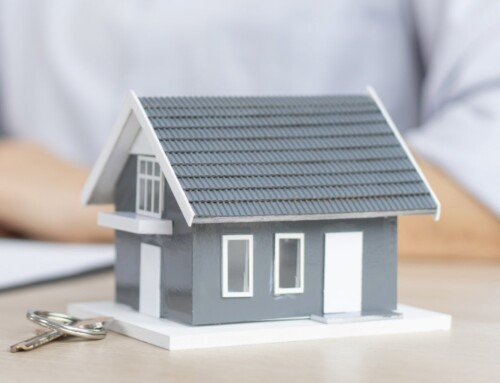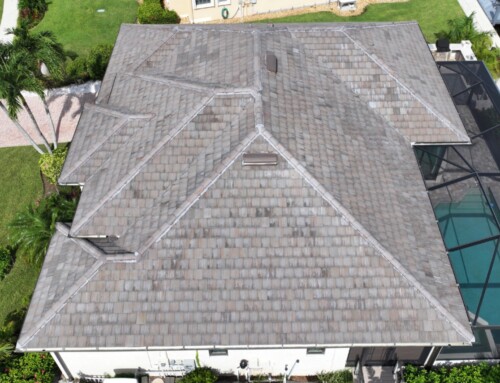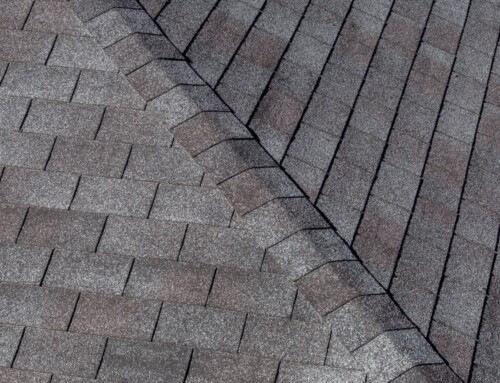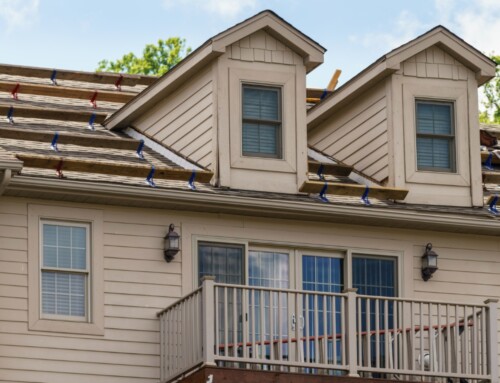When it comes to maintaining your property, the roof is a crucial component. It protects your home or business from the elements, contributing to the overall structural integrity.
However, roofs don’t last forever. Over time, they can suffer from wear and tear, leading to the need for repair or replacement.
The question is, how do you decide between shingle repair and roof replacement?
In this guide, we’ll delve into the key differences between these two options. We’ll provide insights to help you make an informed decision that suits your specific needs.
Understanding Your Roof’s Condition
The first step in deciding between shingle repair and roof replacement is understanding the current condition of your roof. This involves a thorough inspection, ideally by a professional roofing contractor.
During the inspection, the contractor will look for signs of damage. These can range from minor issues like a few missing shingles to major problems like structural damage.
The age of your roof also plays a significant role in its condition. Different roofing materials have varying lifespans, and knowing the age of your roof can help determine if it’s nearing the end of its life.
Weather conditions in your area can also affect the condition of your roof. For instance, roofs in areas prone to hail or high winds may require more frequent repairs or replacement.
Finally, regular maintenance can significantly extend the life of your roof. Regular inspections and timely repairs can prevent minor issues from escalating into major problems.
Signs You Need Shingle Repair
Shingle repair is often sufficient for minor roof damage. Here are some signs that your roof may need shingle repair:
- Missing shingles: This is often a result of high winds or heavy storms.
- Curled or buckled shingles: This can indicate aging or heat damage.
- Granules in the gutters: This is a sign of shingle wear and tear.
- Leaks in your attic: This can indicate a problem with your shingles or underlayment.
- Damaged flashing: This can lead to leaks and requires immediate attention.
When Roof Replacement Becomes Necessary
On the other hand, there are situations when roof replacement becomes necessary. Here are some signs that you may need to replace your roof:
- Your roof is over 20 years old: Most roofs have a lifespan of 20-25 years.
- You have multiple leaks: This can indicate widespread damage.
- Your roof has significant damage: This can be from a storm, fire, or other event.
- Your roof has sagging areas: This can indicate structural issues.
- You’re planning to sell your property: A new roof can increase property value.
While roof replacement can be a significant investment, it can also provide long-term benefits, including increased property value and peace of mind.
Cost Analysis: Repairing vs. Replacing Your Roof
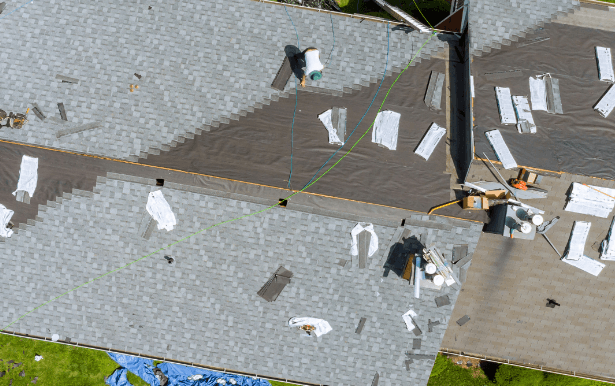
Cost is a significant factor when deciding between shingle repair and roof replacement. Both options come with their own set of expenses.
Shingle repair is generally less expensive upfront. It involves replacing or fixing damaged shingles, which is less labor-intensive and requires fewer materials than a full roof replacement.
However, frequent repairs can add up if your roof has extensive damage. In such cases, a full roof replacement may be more cost-effective in the long run.
A roof replacement involves removing the old roof and installing a new one. This process is labor-intensive and requires more materials, making it more expensive upfront.
However, a new roof can last for decades with proper maintenance. This longevity can offset the initial investment, making it a cost-effective option in the long run.
Short-Term vs. Long-Term Costs
When considering the costs of shingle repair versus roof replacement, look at both short-term and long-term expenses.
In the short term, shingle repair is usually less expensive. It involves fixing specific areas of damage, which requires less labor and materials.
However, if your roof requires frequent repairs, these costs can add up over time. In such cases, roof replacement may be a more cost-effective option in the long run.
A roof replacement involves a larger upfront cost. However, a new roof can last for decades with proper maintenance, potentially saving you money in the long run.
Remember, it’s essential to consider both short-term and long-term costs when making your decision. A professional roofing contractor can provide a detailed cost analysis to help you make an informed decision.
The Role of Insurance in Your Roofing Decision
Insurance can play a significant role in your decision between shingle repair and roof replacement. Depending on your policy, your insurance may cover some or all of the costs.
If your roof damage is due to a covered event, such as a storm or fire, your insurance may cover the cost of repair or replacement. However, you’ll typically need to pay a deductible.
Keep in mind that insurance usually doesn’t cover damage due to neglect or lack of maintenance. Regular inspections and timely repairs can help prevent such issues.
Also, the age of your roof can affect your insurance coverage. Some policies may only cover the depreciated value of an older roof, rather than the full replacement cost.
It’s essential to understand your insurance coverage when considering roof repair or replacement. If you’re unsure, contact your insurance company or a knowledgeable roofing contractor for guidance.
Timing and Seasonal Considerations for Roof Work
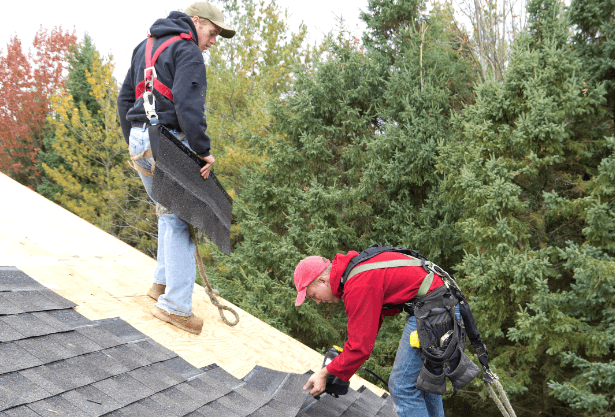
The timing of your roof work can impact the project’s success. Weather conditions play a significant role in roofing projects.
Rain, snow, or high winds can delay the project and affect the quality of the work. Therefore, it’s best to plan your roofing project during a season with mild weather.
Also, consider the availability of roofing contractors. During peak seasons, contractors may be booked up, leading to longer wait times. Planning can help ensure you get the service you need when you need it.
Best Seasons for Repair and Replacement
The best seasons for roof repair or replacement depend on your location. In general, late spring to early fall is considered the best time for roofing work.
During these months, the weather is typically mild, which is ideal for roofing. The warm temperatures help the roofing materials adhere properly, ensuring a quality installation.
However, if you have a roofing emergency, don’t wait for the ideal season. Roofing contractors have strategies to work around weather challenges. Remember, delaying necessary repairs can lead to more extensive damage and higher costs.
Environmental and Aesthetic Factors
When deciding between shingle repair and roof replacement, consider the environmental impact. Roofing materials and processes can have a significant effect on the environment.
For instance, roof replacement often involves removing and disposing of old roofing materials. This can contribute to landfill waste. On the other hand, shingle repair typically generates less waste.
Also, consider the aesthetic impact of your decision. A new roof can significantly enhance your property’s curb appeal, while a repair may not be as noticeable.
Eco-Friendly Roofing Options and Curb Appeal
If you’re considering a roof replacement, explore eco-friendly roofing options. These can include recycled materials or energy-efficient designs.
Such options can reduce your home’s carbon footprint and may even save you money on energy bills. Plus, they can add a unique aesthetic appeal to your property.
Curb appeal is crucial, especially if you plan to sell your property in the future. A well-maintained roof can significantly enhance your property’s appearance and increase its market value.
Preparing for Roof Repair or Replacement
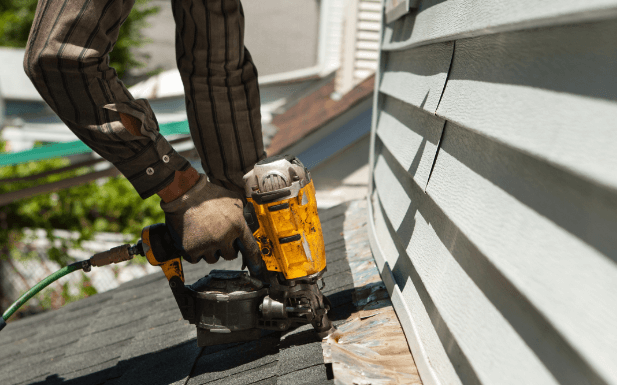
Before you begin any roofing work, it’s essential to prepare your property. This includes clearing the area around your home or business to provide easy access for roofing contractors.
You should also protect your belongings inside the property. Roofing work can cause vibrations that may knock items off shelves or walls. Cover large items with tarps to protect them from dust and debris.
Lastly, inform your neighbors about the upcoming work. Roofing projects can be noisy and may cause minor disruptions. Giving your neighbors a heads-up is a courteous gesture.
What to Expect During the Roofing Process
During a roof repair or replacement, expect some level of noise and disruption. Roofing contractors will need to access your roof, which may involve ladders or scaffolding.
The process may also involve removing old shingles, applying new ones, and cleaning up debris. This can be a noisy process, so plan accordingly. You may want to schedule the work during a time when it will cause the least disruption.
Finally, after the work is complete, expect a thorough cleanup from your roofing company. They should remove all debris and leave your property as clean as it was before the work began.
Conclusion: Making the Best Decision for Your Property
Deciding between shingle repair and roof replacement is a significant decision. It requires careful consideration of your roof’s condition, your budget, and your long-term plans for your property.
In the end, the best decision is the one that brings you peace of mind, knowing your property is protected and your investment is sound.
For expert roof repair services in Bradenton, contact Ridge Valley Exteriors today!

